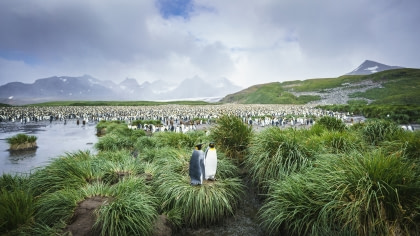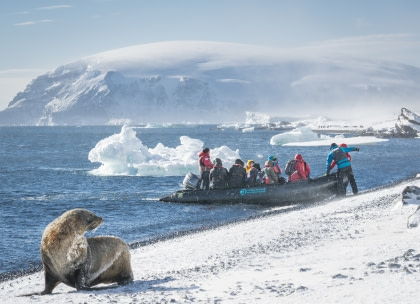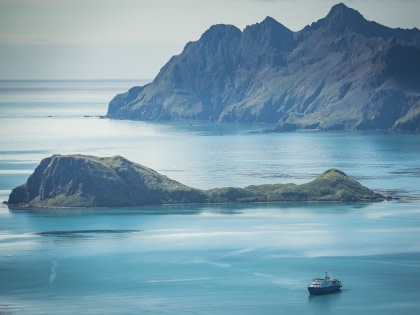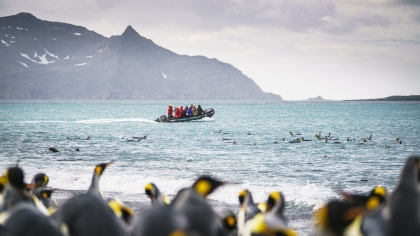Name: Falkland steamer duck (Tachyeres brachypterus)
Height: 67 to 72cm (26 – 28 inches)
Weight: 3.3 to 4.8kg (7.3 to 10.6 pounds)
Location: Falkland Islands
Conservation status: Least Concern
Diet: Marine mollusks, crustaceans, seeds, larvae
Appearance: Brown to gray plumage, gray-white head, orange bill, yellow-orange feet

Picture by Erwin Vermeulen
How do Falkland steamer ducks feed?
Falkland steamer ducks feed, live, and breed along rocky shorelines, sometimes upending in shallow water to pursue food on the seabed. They have been observed to feed alone or in groups.
Are Falkland steamer ducks social?
Yes, non-breeding juvenile and adult steamer ducks sometimes gather in groups of around 300. Ducks that have found breeding partners, however, spend most of their time with their mates and chicks.
What are the mating rituals of Falkland steamer ducks?
Though breeding can happen all year, the usual period lasts from mid-September to late December. The selection of mates among Falkland steamer ducks can be a violent, even deadly process. Males use their wing spurs to attack rivals, and females sometimes do the same.
After breeding, females lay 4 – 12 eggs and incubate them in a down-lined nest of rocks and plant life for 34 days, defended by their mates. Females stay with their eggs all the time except for the 15-30 minutes they leave the nest to bathe each day, during which they cover the egg with vegetation.
Chicks are born in white and brown duvet with a white mark on their heads. They stay with their parents for about 12 weeks, after which they get their plumage. They are sexually mature at 14 – 24 months.

Picture by Sara Jenner
How long do Falkland steamer ducks live?
Captive Falkland steamer ducks have been known to live up to 20 years, though there is no known record of how long these seabirds live in the wild.
How many Falkland steamer ducks are there?
The most recent count from the late 1990s estimated 32,000 individual Falkland steamer ducks, though earlier counts put the number as high as 48,000.
Do Falkland steamer ducks have any predators?
Most predation of the Falkland steamer duck occurs among fledglings, which are a regular target of skuas and kelp gulls. More rarely, seals and sea lions sometimes prey on adults.

Picture by Margaret Welby
Follow-up Falkland steamer duck facts
- Falkland steamer ducks are also known as “loggerhead” ducks
- Geese, swans, and other ducks share the Anseriformes order and Anatidae family with the Falkland steamer duck
- Early observers gave the Falkland steamer duck its name when they noted how the species splashed in the water like a 19th-century steamship
- Falkland steamer ducks are genetically indistinguishable from flying steamer ducks, and some scientists believe they should be a single species
- Because the steamer duck family contains both flying and flightless members, scientists are especially interested in the Falkland steamer as a “model organism” that might teach us about the evolution of flightlessness in birds
Main image by Sara Jenner






